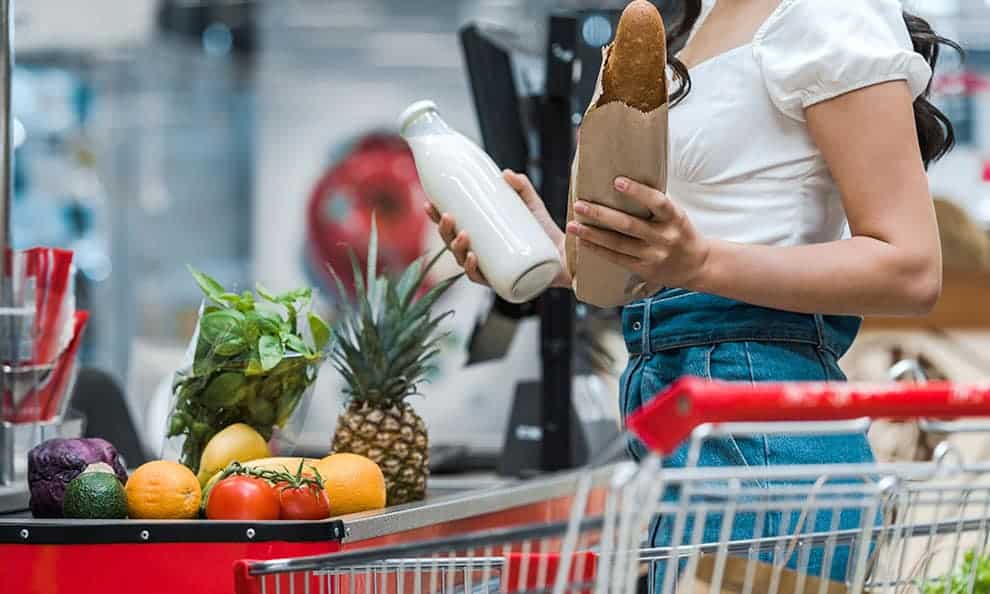Walking through the aisles of my local grocery store, it can be downright frustrating to see just how expensive food has gotten.
With growing economic concerns, inflation, and supply chain issues, rising food prices show no signs of slowing down. Because of this, it seems like every week my grocery bill keeps climbing higher.
If you’re in the same boat as me and you’re looking for any way to reduce your grocery bill (or even just keep it from getting worse) you’re in the right place.
Saving money on groceries doesn’t have to be stress-inducing. There are many simple and quite surprising ways for you to keep that bill as low as possible.
Over the years I’ve been collecting my favorite ways for how to save money on groceries and today I want to share them with you.
1. Make A List & Stick To It

The fastest way to make your grocery bill skyrocket is to add unnecessary items. These are usually impulse buys that cater to current cravings. When you make a list, you know exactly what you need and will be less enticed to buy random items.
Making a list beforehand also helps you not buy things you may already have. On that note, check your refrigerator and pantry before you head to the store. Then, make your list with some meals you would like to make in mind.
When making your list it’s helpful to start with the essentials. Then add the “non-essentials” or “nice to haves” such as snacks, desserts, and drinks. This will allow you to work your way up to those non-essential items and see if they fit into your budget as you shop (rather than at the checkout register).
2. Don’t Go To The Grocery Store On An Empty Stomach

Let’s be honest with ourselves here. When we’re hungry and we’re shopping for food, there’s a much higher chance of adding more to our cart than we should. In fact, there’s scientific research that backs this up.
If you eat beforehand, you’ll be less tempted by all the glorious food on display, and it will be easier to stick to your list. I recommend timing your grocery runs to be after you’ve eaten breakfast or lunch.
3. Join Your Grocery Store’s Loyalty Program
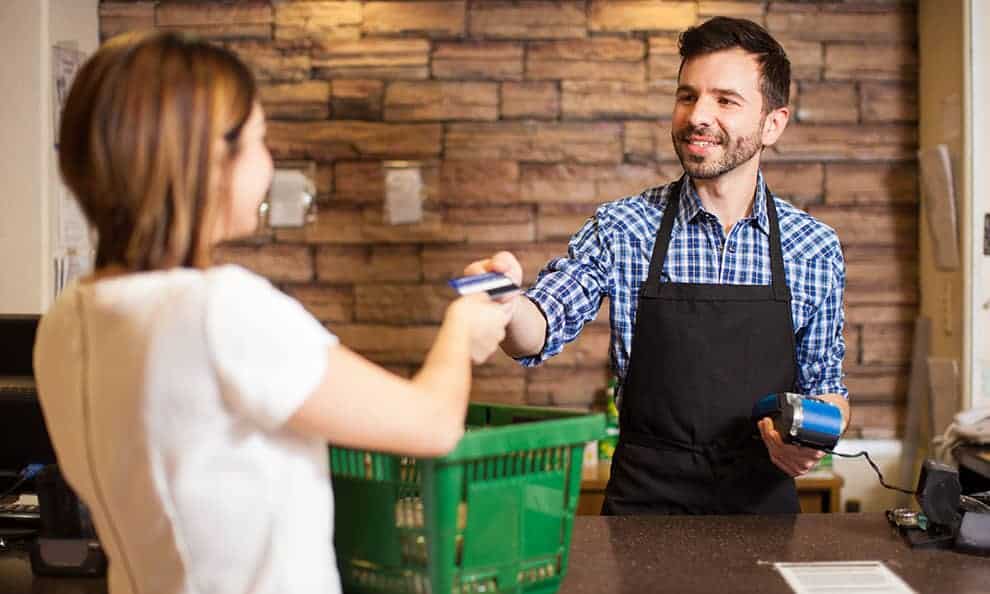
Grocery store loyalty programs are one of the easiest ways to save when it comes time to checkout. It’s really a win-win for both the grocery store and you, the customer.
Grocery stores use loyalty cards as a marketing tactic (to keep you coming back to their store) but also as a way to track your purchases, demographics, and additional metrics so they can gain better insights into the customer experience. The benefits are that you get to enjoy reduced “members only” pricing as well as additional perks, such as points that can be redeemed over time.
Since there is generally zero cost or time investment involved, this is one of the easiest ways to save on groceries.
Here’s a great article outlining some of the best loyalty/rewards programs out there.
4. Ask If There Are Any Discounts At Checkout

Sometimes saving money comes down to simply asking. Cashiers at the register will usually hold on to some of the most popular coupons in case there’s an issue when they go to scan one a customer has brought in.
Though it may be against store policy for them to do so, some cashiers will be more than happy to help you save if you inquire about any coupons they may have.
I’ve started friendly conversations with grocery store cashiers in the past and dropped the question, “Are there coupons I don’t know about for any of these items?” You’d be surprised how frequently they pull one or two out, allowing me to save a few extra bucks.
5. Ask Your Favorite Brands For A Discount

Going off of the point above, you don’t have to only ask at the register. Brands hire entire teams dedicated to customer loyalty and are usually more than happy to send exclusive coupons to those who are interested.
This money-saving tactic has been talked about frequently by coupon gurus out there. The general consensus is that the best way to go about this strategy is to send a letter in the mail to the brands headquarters, expressing your admiration for their products and end by politely asking if they have any coupons available.
This article does a good job of going in-depth on how to write this letter in a way that improves your chances of receiving coupons (they even include template letters).
6. Use A Cash Back Credit Card
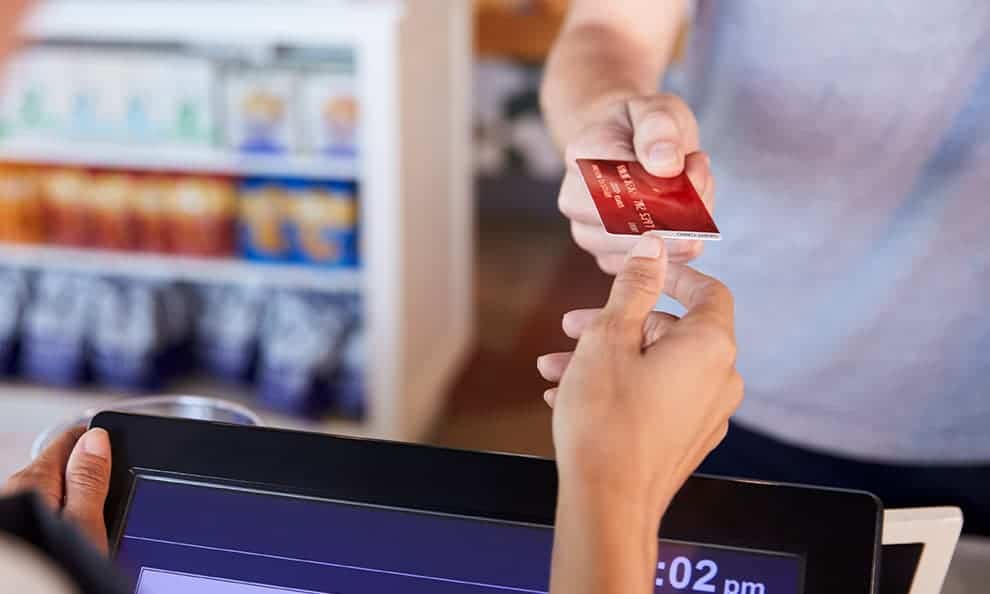
Cash back credit cards are something of a mystery to me. As long as you pay them off on time, it’s like getting free money every time you go to make a purchase. This is why I highly suggest using a cash back credit card as a means to pay for (and thus save) on your grocery bill.
There are a ton of cash back credit card options out there, all ranging in what they offer and how they work. It can get a bit confusing trying to figure out which one is the best option given your circumstances, so you may want to ask for help when looking for the right card.
Since many credit cards limit the amount of cash back they give out per year, a good rule of thumb would be to add up your grocery expenses for the year and find one that has a cash back limit higher than that (or even better, no limit at all). This allows you to maximize the money you get back for all of your grocery store purchases.
Here is a great resource for finding a cash back credit card that fits your needs.
7. Only Bring Enough Cash For Your Budget
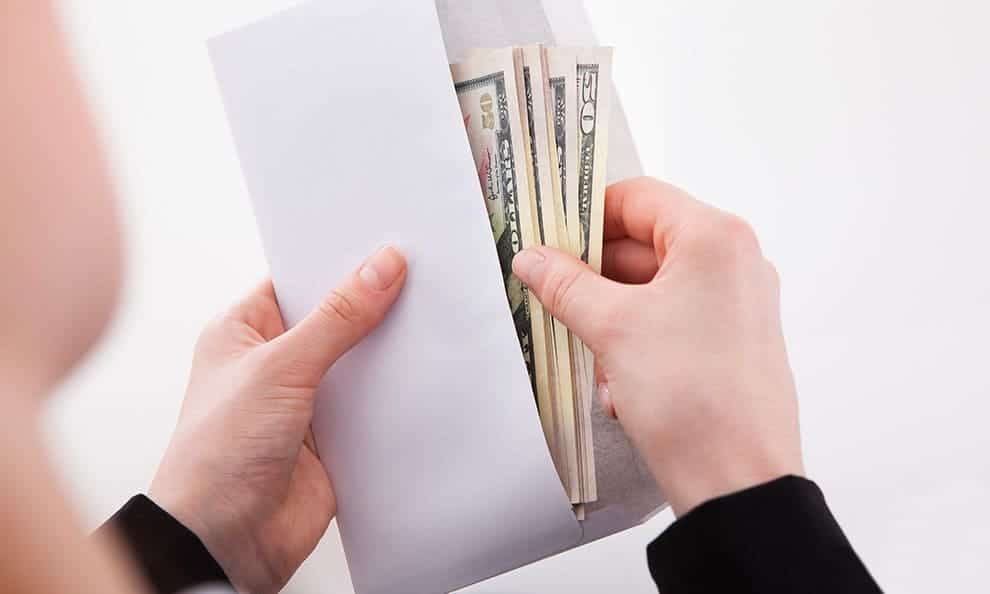
Don’t use credit cards? There’s still a way for you to ensure you stick to your budget and save—only bring enough cash to cover what your grocery budget is and not a penny more.
This may seem strict but if you don’t have the excess cash on hand, you’re quite literally unable to overspend.
A simple way to do this is to separate the cash for your grocery budget into an envelope and leave the cash in your wallet at home.
8. Buy Off-Brand Items

When you buy food at the grocery store, you’re paying for more than just the food. You’re paying for the marketing, branding, packaging, etc. All of these costs get passed down to you, the customer.
One way to not get forced into paying for a brand’s advertising, marketing, and packaging is to simply buy the generic version.
Foodtown wrote a very informative article here breaking down the common myths between brand name versus generic store-brand items. The biggest takeaways are that not only are the generic options almost always less expensive, they’re often tastier and even more nutritionally balanced.
9. Keep Track Of Food Prices
![]()
One of the most frustrating parts of grocery shopping is that you can buy the exact same items week after week and your bill can be completely different. A lot of this has to do with sales cycles. These are patterns for when certain items go on sale or have their prices reduced. It usually has to do with rotating out older products as well as promoting holiday specific products.
While you can certainly track prices the old fashioned way (with a notepad and pen) I’ve found it to be more efficient to use a price tracking app, such as Basket or Price Book, and let it do the hard work for me.
10. Shop Sales, Markdown & Clearance Items
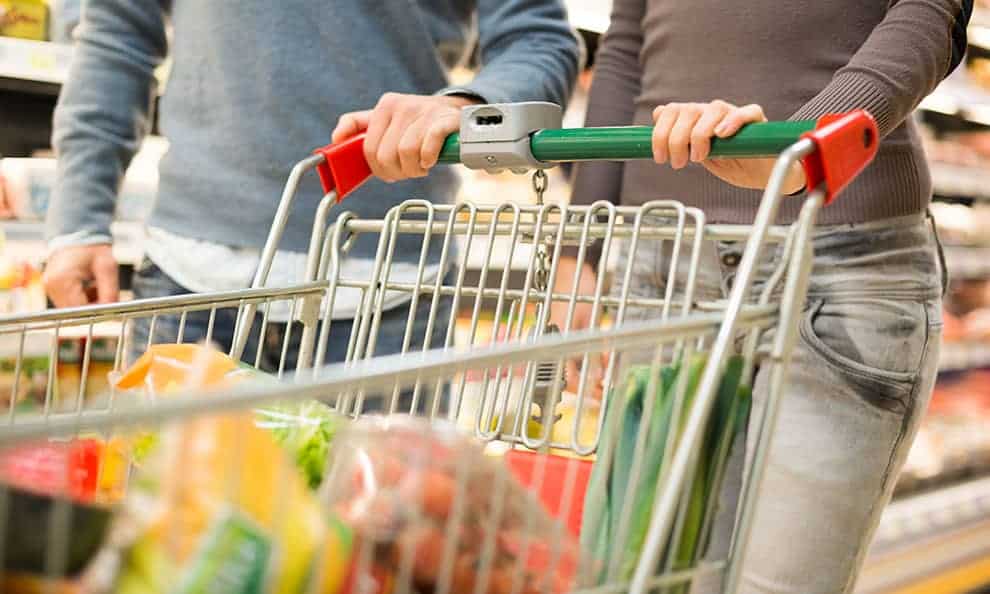
This strategy is a bit of a no-brainer. When grocery stores need to get rid of products, whether to make room for new items or certain items are about to expire, they’ll reduce prices. This happens when items are at the end of their sales cycle and need to leave the store, whether that means being purchased by a customer or (unfortunately) being thrown away.
There are a multitude of ways to find these sales and price reductions but one of my favorite ways is to use Grocery Pal. This app will tell you what is on sale at specific grocery stores near you.
11. Stock Up On The Best Deals

When you find a good deal—be it through a sale, discount, or coupon—stock up! While it may seem easy to do with dry goods and canned goods, it’s also doable with meats, fish, fruit, and produce. We’ll go over the basic preservation methods a bit later on.
12. Sign Up For Your Grocery Store’s Email Newsletter

While I’m against signing up for most newsletters—simply due to the crazy amount of spam we all get these days—grocery store email newsletters are a treasure trove for saving money.
Major supermarkets and grocery stores nationwide such as Aldi and Safeway use their email newsletters to give customers a first look at what’s going on sale, special coupons, and other discounts.
As an FYI, some grocery stores don’t give you a direct way of signing up for just their email newsletter. Rather, you have to create an account on their website first to be automatically added to their email newsletter.
13. Take Advantage Of Price Adjustment Policies
is a marketing technique used by grocery stores (and other retailers) to match a competitors lower price on the same product. Some grocery stores may use this as a marketing strategy to get new customers in the door who will be happy knowing they’re getting the lowest price on their purchase.
You’ll want to check the grocery stores in your area to see if they offer price matching. Here are some of the popular ones that do:
14. Base Meals Around Cheap Foods

The easiest way to stretch your dollar when you go grocery shopping is to simply buy cheaper foods. This way you can make the same amount of meals but spend less.
Sure, you could take this to extreme and only buy instant ramen noodles but there are ways to eat cheap and nutritionally balanced meals.
One of my personal favorite ways to find cheap recipes is via a blog called Budget Bytes. They outline simple and inexpensive recipes, many of which come in under $3 per meal. They even give you estimated per-serving costs, which is helpful for those making meals for bigger households.
15. Factor Gas Into Your Grocery Store Budget
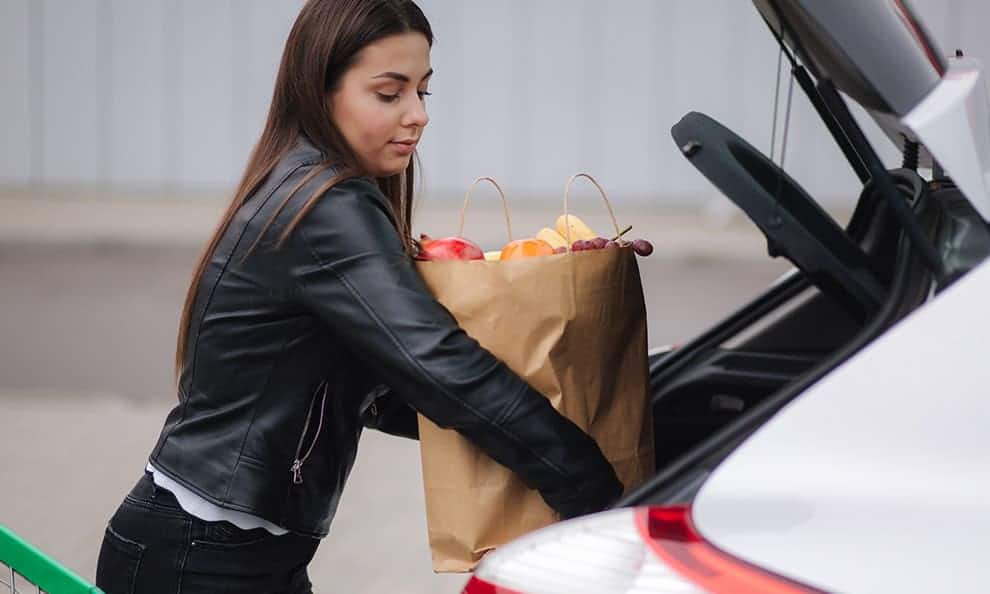
Regular trips to the grocery store can really eat away at the amount of gas your car uses. When gas is cheap, this may not be a big issue but when gas prices rise to $4+ per gallon, it can get expensive.
About 33% of America lives in “food deserts” where the nearest grocery store can be as far as 10 miles away. In these instances, weekly grocery trips can drain your gas tank in around a month (depending on your car) and take a hidden chunk out of your grocery budget.
Here are some simple ways to remedy these types of situations:
- Consider ordering your groceries online. In some cases there will be a delivery fee so you’ll want to use a trip cost calculator (like this one) to see if it’s cheaper to drive yourself or order online.
- Reduce the frequency of your grocery store trips. If you currently go to the grocery store weekly, you may want to shift to twice or once per month instead. This way there is less driving back and forth.
- Try biking or taking public transportation. I have a bike with a tow attachment that allows me to place around 4-5 grocery bags. While it’s not great for big grocery hauls, it does allow me to get some exercise and enjoy the nice weather on my way to and from the grocery store. If you don’t have a bike or don’t want to bike, you may want to consider using public transportation instead. To help carry your groceries, you can always use a cart like this one.
16. Military, Student, & Other Discounts
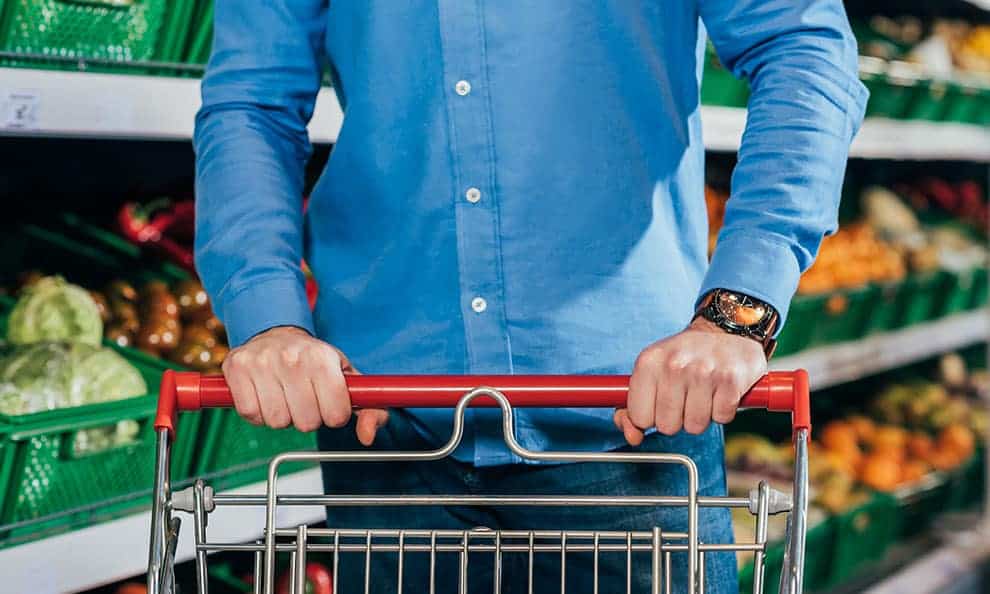
Many grocery stores and food brands honor active military, veterans, students, and others with special discounts. You’ll want to check with the grocery stores local to your area to see if they offer any discounts or shopping incentives (for example, free delivery) for those in the military, students, etc.
17. Shop The Day After Major Holidays
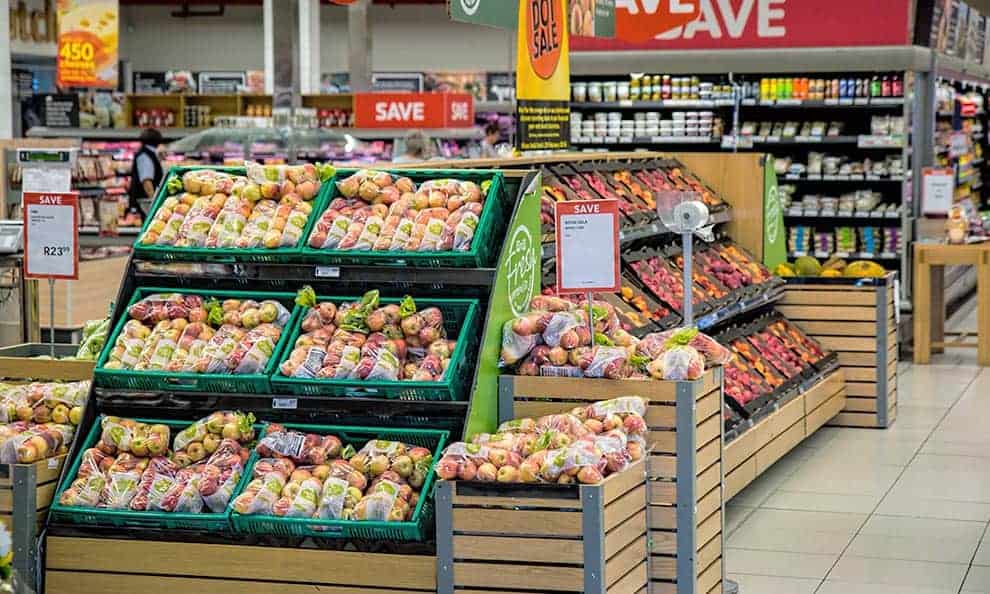
Ever walked into a grocery store after Halloween or Easter to find all that seasonal candy marked down by 50% or more? Grocery stores usually overestimate how much food they’ll need for holidays as a way to ensure they’ll have enough for the holiday rushes.
Big holidays such as Christmas and Thanksgiving give savvy shoppers the perfect time to save. The day after these holidays, when others might be sleeping off their big dinners, you’ll want to be grocery shopping. Grocery stores need to offload holiday-specific foods (such as turkey and ham) by discounting them so they can make way for new products.
18. Buy & Use Discount Grocery Store Gift Cards
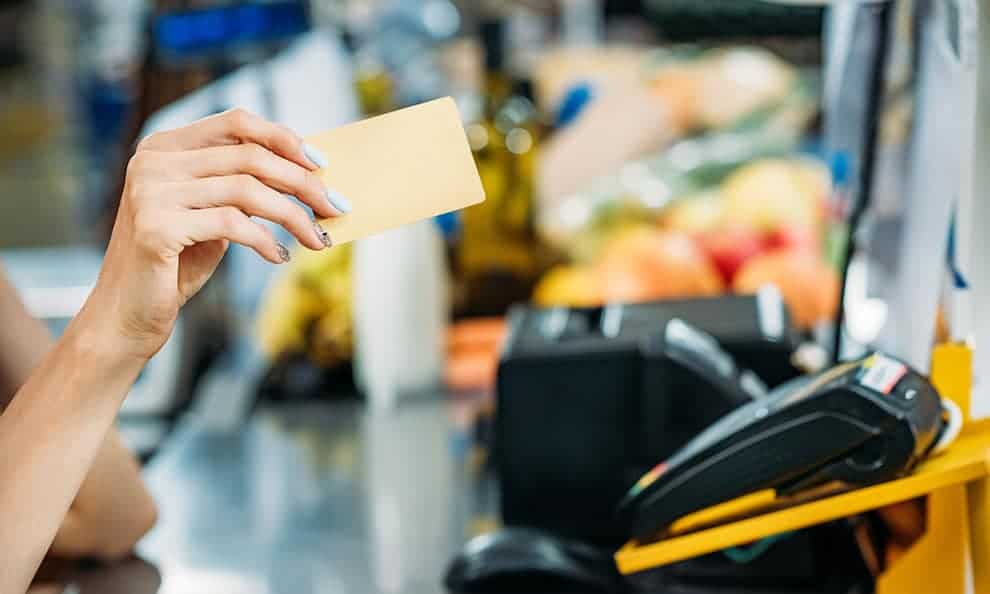
Gift cards don’t have to only be used as gifts. In fact, many grocery stores run promotions to get people to purchase their gift cards around big holidays. Even if you aren’t able to score a discounted grocery store gift card around the holidays, there’s still ways you can use them to save at the register.
Sites like Raise and Gift Card Granny are great places to find grocery store gift cards at a discount. Some of these gift cards offer 5%+ discounts.
19. Some “Organic” Foods May Not Be Worth The Added Cost
are great for the environment but not always great for your wallet. The price difference between organic versus their non-organic counterparts varies widely by what’s being compared.
Sometimes the organic option can be 20% more expensive whereas other times the prices can be nearly identical. If you’re trying to be mindful of your budget and save as much as possible at the register, only go with organic options when the cost is the same as the non-organic alternative.
20. Cut Back On Non-Essentials
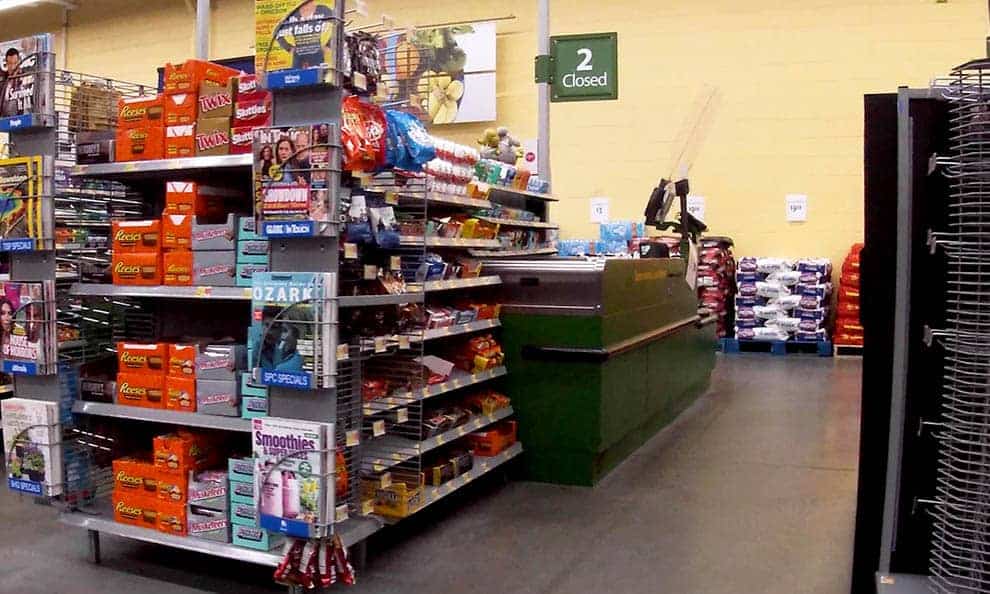
When making your way down the grocery store aisles, it’s easy to be enticed into adding more to your cart than you really need. Take stock of what your food needs are and consider reducing or eliminating any of the following items:
- Bottled drinks
- Desserts
- Candy
- Snacks
My trick for not getting pulled into buying unnecessary food or drinks is to stick to shopping on the perimeter of the grocery store. It’s there that you’ll find the essentials such as meats, produce, and fruits. In the middle of the aisles is where grocery stores tend to stick junk food.
21. Only Buy Food & Pantry Essentials At Grocery Stores
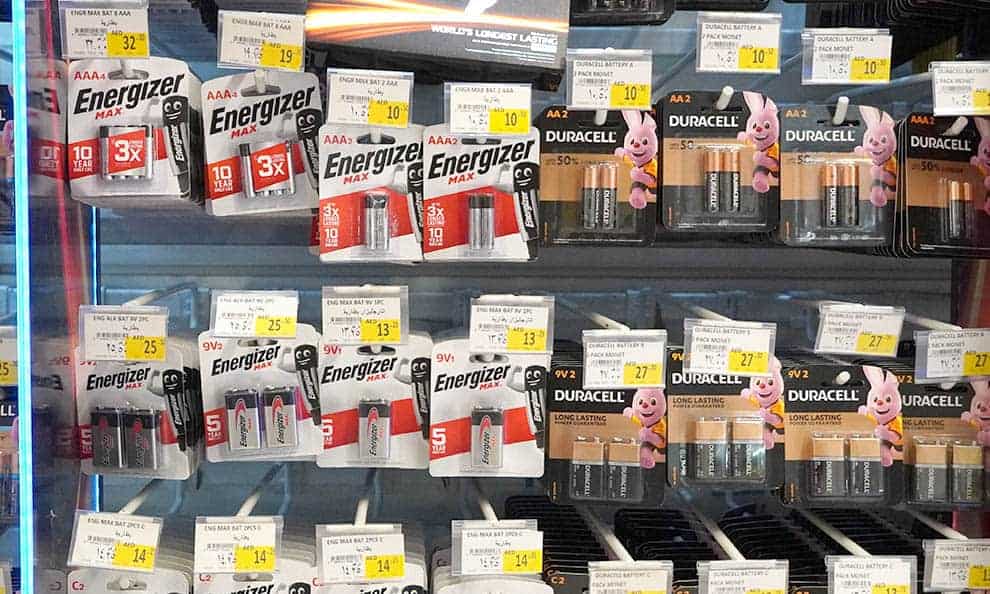
It can be tempting to grab everything you need for your home when shopping at a grocery store. Though, you may be surprised to learn that the biggest markups are usually on non-food products. This includes items such as light bulbs, batteries, medicine, beauty supplies, and more. These items can usually be found cheaper at your local pharmacy, hardware store, or even online.
22. Skip The Pre-Made Foods
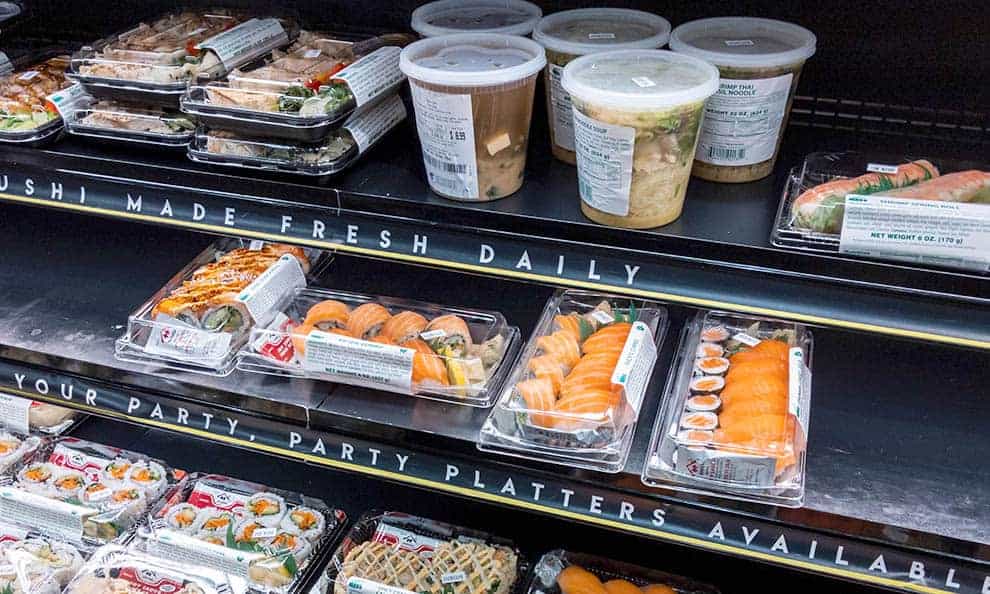
More convenience usually means a higher price tag. This is especially true when it comes to the fresh prepared food counter at grocery stores.
To give you an idea of how much more these pre-made foods cost when compared to their homemade counterparts, take a look at the comparison table in this article by Consumer Reports. Many of the pre-made food examples they list come in over 2x more expensive than the homemade versions.
23. Always Check The Unit Price

Comparing prices at a grocery store can be tricky, especially when it comes down to which product is the best bang for your buck. That’s where unit pricing can help.
Unit pricing takes the amount of food in the packaging and divides it by the total price to give you a breakdown of the foods price by a specific unit (usually ounces). This allows you to compare prices equally among each product and choose the one that has the lowest per-unit price.
If you’re a little confused on how to do this, don’t worry. Here’s a great article that goes more in-depth and gives real-world examples of how to use unit pricing to make more budget-friendly grocery shopping decisions.
24. Shop At The Dollar Discount Store
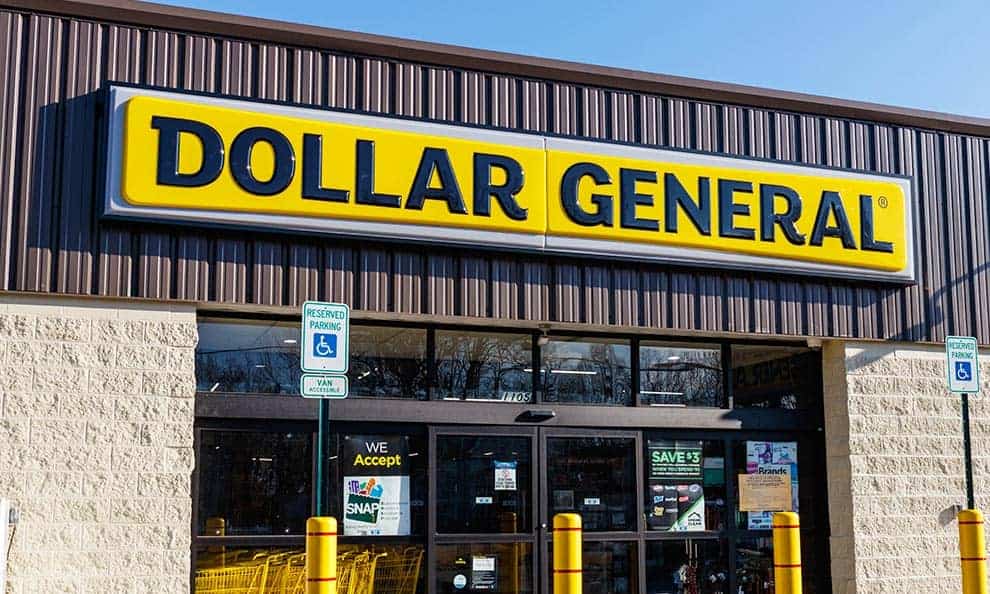
You may be shocked to learn that research shows dollar discount stores offer similar quality healthy food options at lower prices than grocery stores. So, if you happen to live in a “food desert” and your only grocery shopping options are a Dollar General or other similar stores, you can still save big while eating well.
25. Use Reusable Grocery Bags

Depending on the state you live in, there could be a tax on grocery store bags. In the state of Oregon, for example, they banned single-use plastic grocery bags entirely, and charge 5 cents for each paper bag that you need for your groceries.
To avoid this, purchase durable, reusable grocery bags that you always take with you to the store. Or, simply reuse bags you have around the house.
Even if your state doesn’t charge for single-use grocery bags, it’s still worth using reusable bags as it’s better for the environment.
26. Buy Certain Items In Bulk

Buying in bulk can be a great way to save at the register as well as reduce the frequency in which you have to drive to the grocery store (saving on gas). The trick is knowing what to buy in bulk and how to store it so it lasts as long as possible.
Many dry goods will last months, if stored in a cool and dry environment. This includes flour, rice, oats, and pasta.
Canned goods also have a fairly long shelf-life and can make for quick, inexpensive meals. This includes beans, soups, and even canned vegetables.
Where things get a little tricky is when it comes to bulk buying meats and produce. Though it can save you money (should you find a good deal) you’ll have to be comfortable preserving these foods. More on that below.
Food Box HQ Tip: Only buy items in bulk that are marked down and their unit price is less than comparable products. Buying everyday items in bulk might not save you money unless you’re at a warehouse club store such as Costco.
27. Buy In-Season Produce

It’s best to stick to in-season (or close to it) fruits and vegetables. Not only will they be higher quality, but they won’t be as expensive as out-of-season produce. Grocery stores have to pay higher shipping costs to obtain out-of-season produce, as it is most likely not grown in the U.S. Because of this, the cost of the produce will be exceptionally higher.
Here’s a great resource for finding out which produce is in-season at which month.
28. Compare Store Prices
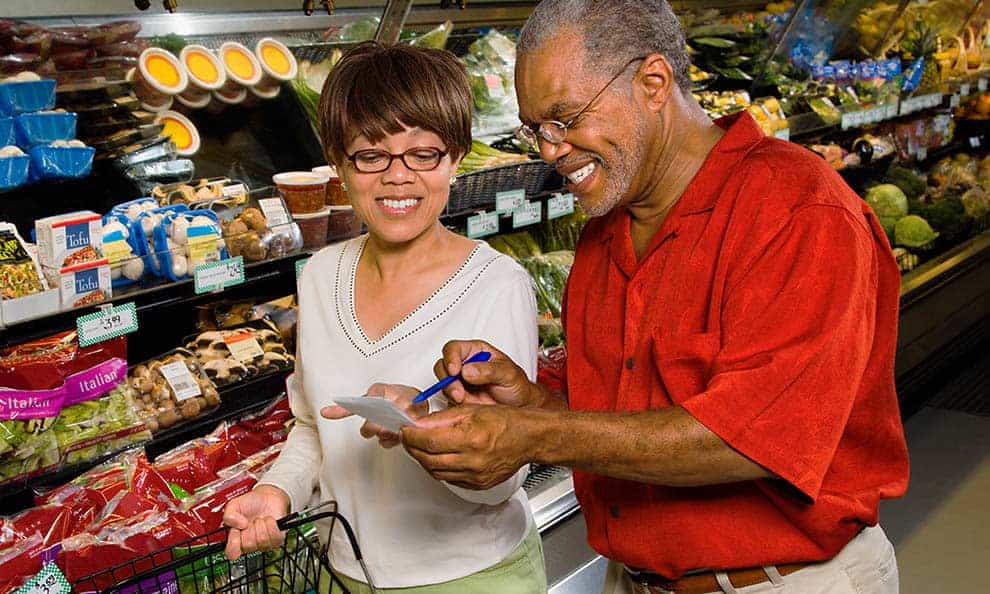
Different grocery stores will sell the same item for different prices. While some items may only be a few cents different, other items may be cheaper by a few dollars. This could lead to a significant price difference when everything is added up at checkout.
An easy way to compare prices is by simply going on the websites of grocery stores around you and seeing what price they list the same products at.
29. Save With A Cash Back Rebate App

Another super simple way to save on groceries with very little extra work involved is by using a rebate app. If you’re not familiar with rebate apps, they essentially offer cash back after you upload a photo of your receipt to the app.
If this sounds too good to be true, it’s not. These rebate apps collect your information in order to perform market research and help brands understand the sales performance of their products. This means you’ll have to give the app some information about who you are but for money back on every purchase, it might be worth the trade.
Some of the biggest benefits to using a rebate app are that you don’t have to keep track of coupons and you can use multiple apps to maximize your cashback.
My personal favorite app is Ibotta because it’s so simple to use but there are a whole host of rebate apps you can use for grocery shopping. Here’s a great list.
30. Make Couponing Easy

Coupons are every savvy shoppers favorite way to score deep discounts. But when it comes to grocery store coupons, who has time to look through the newspaper circular every week and cut out individual coupons? That’s where coupon apps and websites can be extremely helpful.
Flipp is a really helpful website that curates all of the weekly coupon ads found in newspapers around the country.
Another favorite of mine is The Coupons App. It’s a mobile app that has a searchable database of thousands of grocery store coupons. This means no more shuffling around coupons at the grocery store checkout. Simply lookup coupons as you shop and have them scanned on your phone at the register.
But don’t only rely on the list above to find coupons. Many grocery stores these days have their own apps where they publish coupons (sometimes exclusive to app users only).
31. Use Competitor Coupons
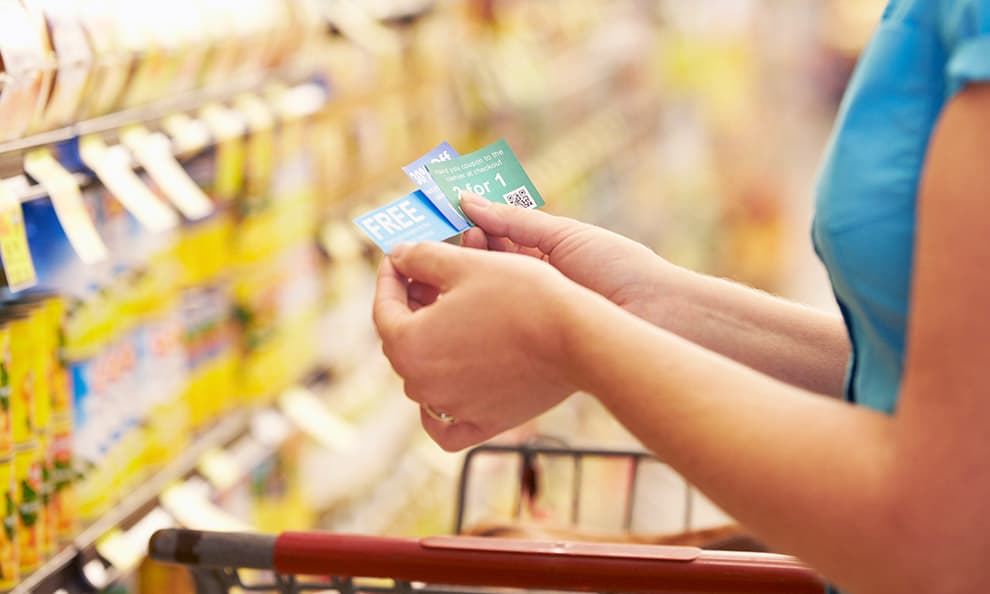
In an effort to attract customers, some grocery stores will accept competitor coupons. This can be a great way to ensure you’re getting the best deal, regardless of where you shop.
Some popular grocery stores that allow you to use competitor coupons are:
- Winn-Dixie
- Publix
- Giant
- Kroger
- Walmart
- Target
If you’re not sure if your local grocery store will take a competitor’s coupon, I recommend asking a manager. Even if they don’t have a store policy to accept them, sometimes, if you ask nicely, they’ll make an exception.
32. Learn How To Stack Coupons

What’s better than using one coupon to save? Using two, three, or more!
Some grocery stores allow you to stack multiple coupons to dramatically improve your savings. The trick to stacking coupons is using a manufacturer coupon and store coupon together. Sometimes you can take it even further by stacking a competitor coupon.
Only some stores will allow you to stack coupons but it’s worth finding out if you can do it at your local grocery store. Who knows, you could end up like this kid who was able to stack enough coupons to the point where the store hilariously ended up owing him money!
33. Use The Groceries You Already Have

This may seem a bit counterintuitive but you can save a lot of money by simply using all of the groceries you already have.
Food waste is a huge problem in America, with nearly 40% of all food being wasted. Much of this is due to people throwing away uneaten food at home.
One of my favorite ways to make use of all the food we have before a grocery run is to use this website called Supercook. The way it works is pretty ingenious. You input all of the food you have on hand and it’ll spit out recipes for meals that use those ingredients.
34. Reduce Portion Sizes
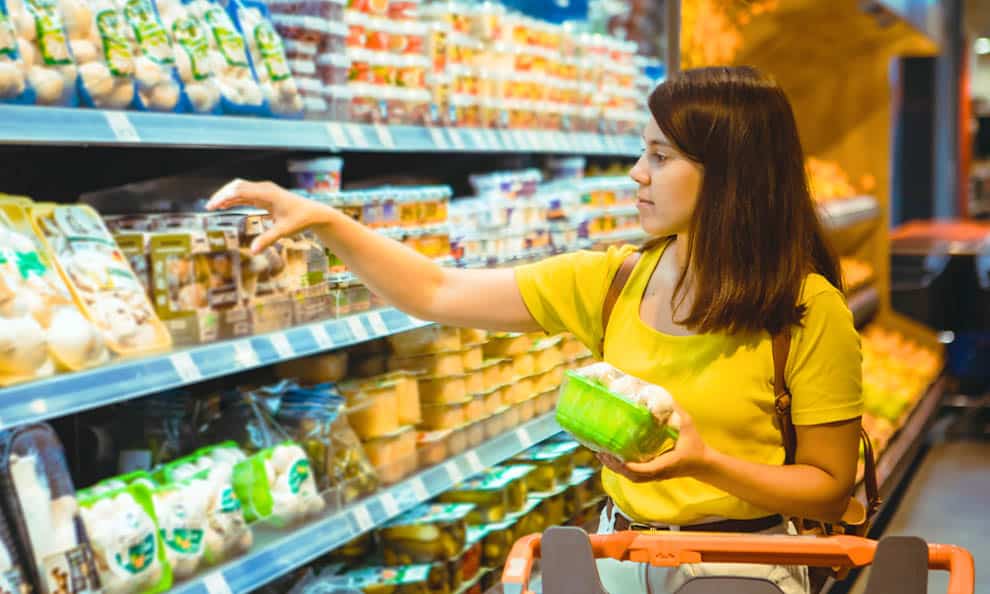
Thinking of going on a diet? Reducing portion sizes can be a good way to lose weight as well as save money on groceries. Less food on your plate means less food you need to buy.
It’s important to reduce portion sizes methodically so you stay healthy and don’t starve yourself. Here’s what’s recommended by the U.S. Department of Health and Human Services.
35. Don’t Be Afraid To Ditch Items At Checkout
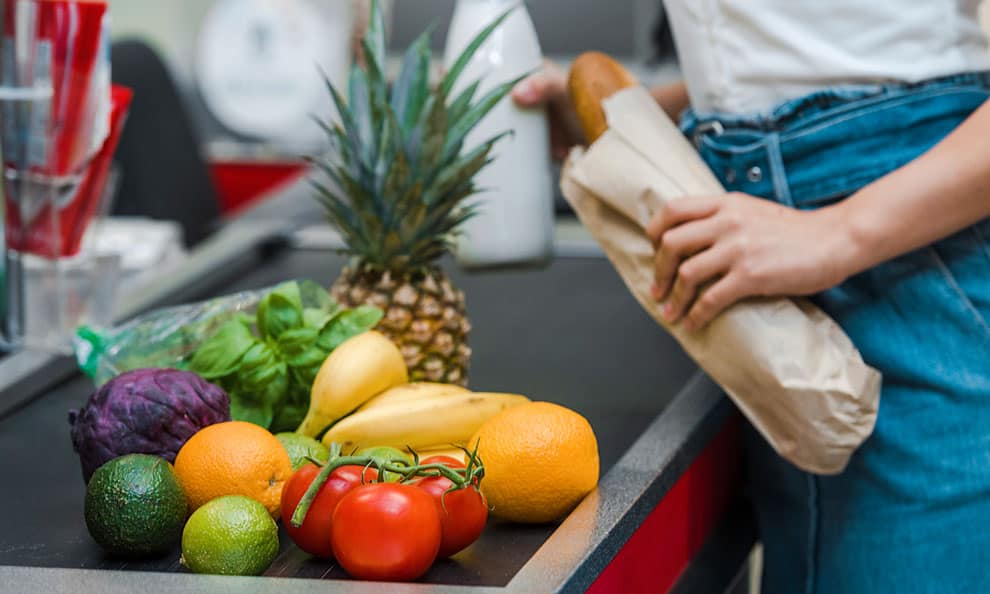
If you reach the end of your shopping journey and find, at checkout, that you’ve gone above your budget, don’t be afraid to ask the cashier to remove some items.
There is no shame in sticking to a budget and there’s ways to remove the items in a non-embarrassing way. For example, simply saying, “Oh I didn’t mean to grab . Can you please remove that?” is easy enough.
36. Buy Groceries Online
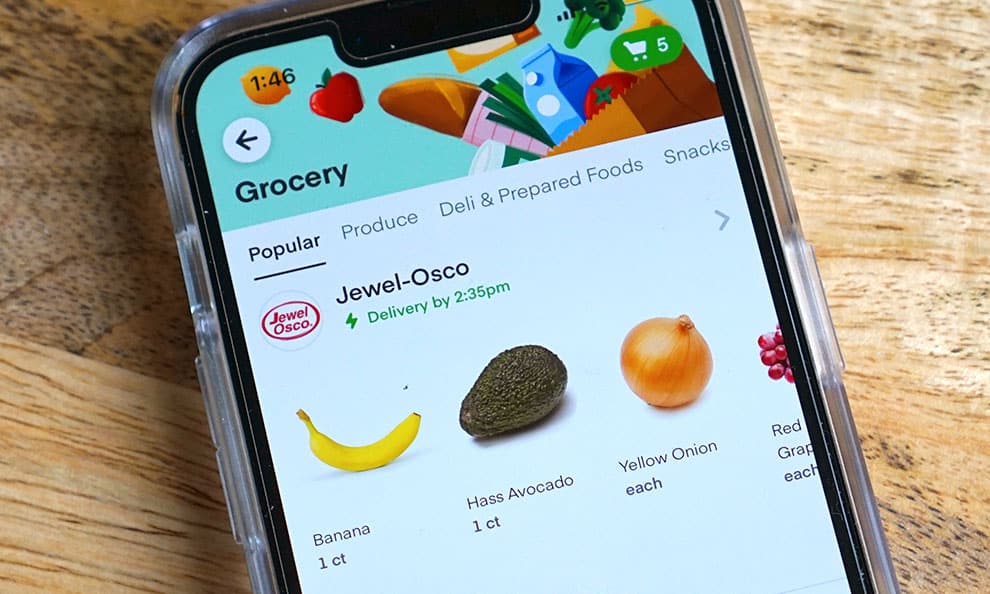
Buying groceries online can be cheaper, when done properly, and will definitely save you money on gas you would’ve spent driving to your nearest grocery store.
With online grocery shopping, you also won’t be as likely to accidentally add items to your cart that you already have since you can simply walk over to the kitchen and check.
Most importantly, though, you’ll be able to see your total cost as you shop. This will ensure that you stick to your budget as you’re adding items to your cart.
Most supermarkets these days now offer online grocery options that you can pick up at the store. Though, if you would like to save on gas, there are a couple of online grocery services that will deliver groceries straight to your door. Instacart, Shipt, Peapod, Thrive Market, Hungryroot, and Misfits Market are a few popular options I’ve used in the past. Be sure to look around for the cheapest option based on the food you need.
37. Eat Less Meat
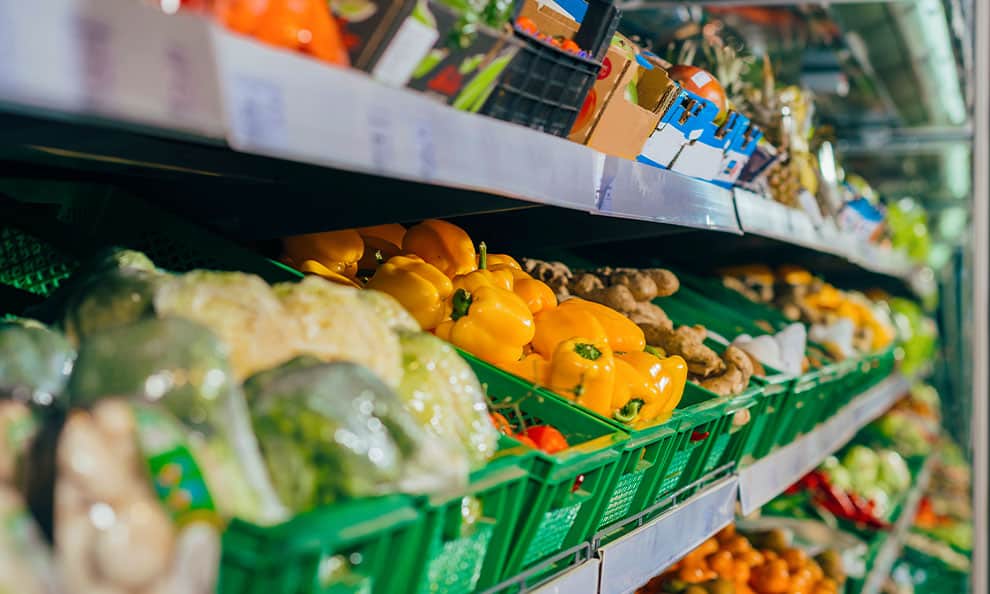
Meat can be one of the more expensive items in your cart on grocery day simply due to the fact that we buy so much of it. This is mainly due to the fact that cultural norms suggest we should be eating meat in at least one meal per day (mainly dinner). However, that doesn’t have to always be the case.
Reducing your meat intake can be a great way to cut food costs as well as help the environment. One way I personally do this at home is by having “Meatless Mondays” where my wife and I eat plant-based meals for the day.
38. Try A Cheap Meal Delivery Service

If you’re looking to try new recipes and save on groceries, a cheap meal delivery service could be an ideal option to check out. Two of my personal favorite inexpensive options are EveryPlate and Dinnerly. Both offer meals that come in around $5 per serving.
If you live in a food desert where your nearest grocery store is 20 minutes or more away, utilizing a cheap meal delivery service could be a great way to save on the gas it would take you to drive to the store and back.
39. Check Prices At The Farmers Market

The farmer’s market is one of the best places to buy local fresh produce. Plus, depending on the specific farmers market, their prices may be cheaper than what you would find at the grocery store.
Another benefit to purchasing fresh fruits and vegetables at the farmers market is that you get to support local farmers. Buying produce from local farmers is better for the environment in many ways, especially if they are organic farmers and practice regenerative agriculture.
Here’s a directory to help you find the farmers market nearest to you.
40. Don’t Shop With Your Kids
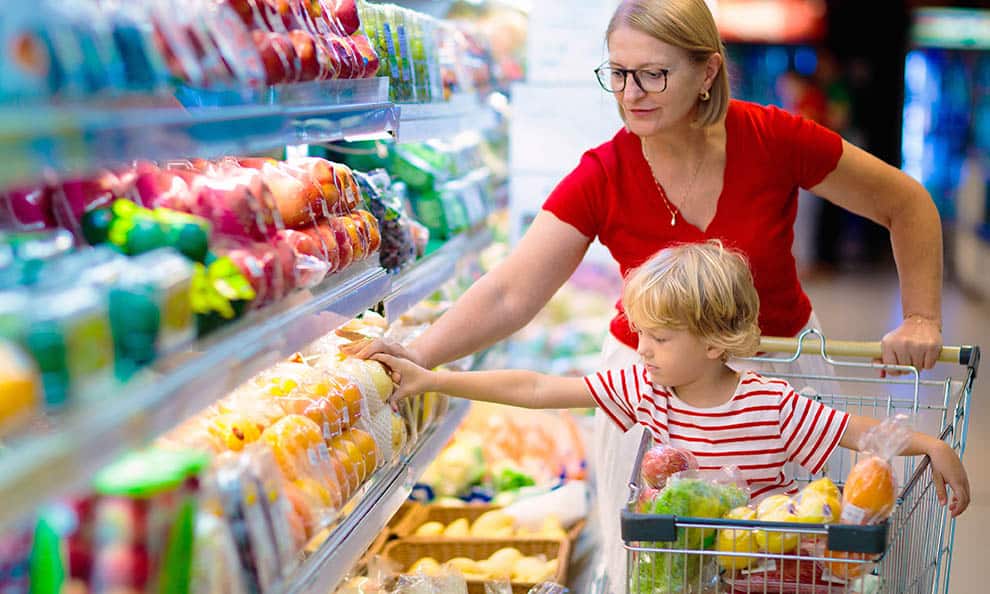
If you have kids, I’d recommend leaving them at home with your partner (if possible). Or, at the very least, distracting them with a video or game while you shop while you shop.
Why?
Kids tend to be lured to the in-your-face marketing and packaging of sugary foods, candy, and other junk food. This can easily lead to unwanted temper-tantrums if said food is not purchased for them.
41. Don’t Be Afraid To Shop At Multiple Stores (If It Makes Financial Sense To)

If you’re bargain hunting, you may find that different stores offer better prices on different foods. If it makes financial sense, you may want to consider breaking up your grocery shopping efforts to score the deepest discounts across multiple grocery stores.
What you don’t want to forget, though, is the gas required to go from store to store. It’s not going to be worth driving far if you only save a dollar or two at checkout. That being said, it may be worth stopping at a second grocery store if it’s on the way to or from another.
42. Shop Wednesday Afternoon Or Evening To Save The Most
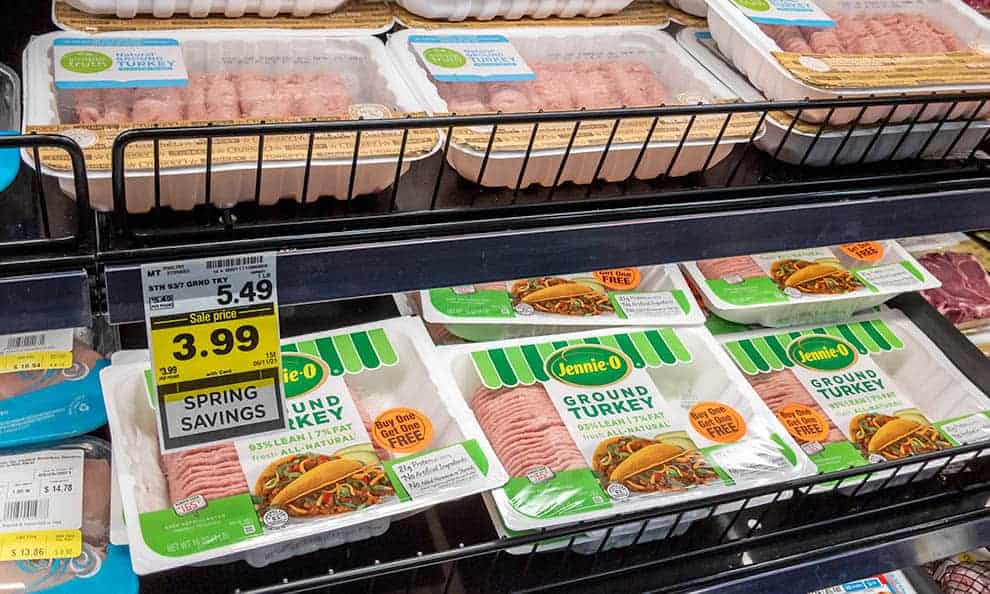
There’s actually a specific day and time where the stars align and you can find the best deals. It happens to be later in the day on Wednesday.
Why is this?
Not only do the bulk of grocery stores begin their weekly specials on Wednesday but late afternoon is when some stores begin to mark down perishable items—like fresh produce and meat.
Not every single one follows this same pattern so you’ll want to check with your local grocery store to see when they start specials and markdowns.
43. Grow Your Own Food

Growing your own food is one of the greatest ways to supplement your grocery store runs. The best part is you can grow as much or as little as you’d like, depending on your needs.
For example, my wife and I grow all of our own herbs and we’re in the middle of planting some vegetables this spring season. All it takes is a little bit of nurturing the plants and they’ll grow for years to come.
Should you want to take things to the next level, you can quite literally cultivate a small farm with the right knowhow.
If you live in the city or have a small outdoor space, consider growing some of your favorite vegetables in containers. It’s surprisingly not as hard as it sounds. Vegetables and fruits that do well in containers include tomatoes, peppers, cucumbers, lettuce, green onions, spinach, and strawberries. Culinary herbs can also be grown in containers, both indoors and outdoors, including basil, rosemary, cilantro, oregano, thyme, and sage.
If you’re new to gardening, or growing vegetables, check out The Vegetable Gardener’s Bible. It’s a wonderful resource for how to grow an organic vegetable garden.
44. Preserve Your Food
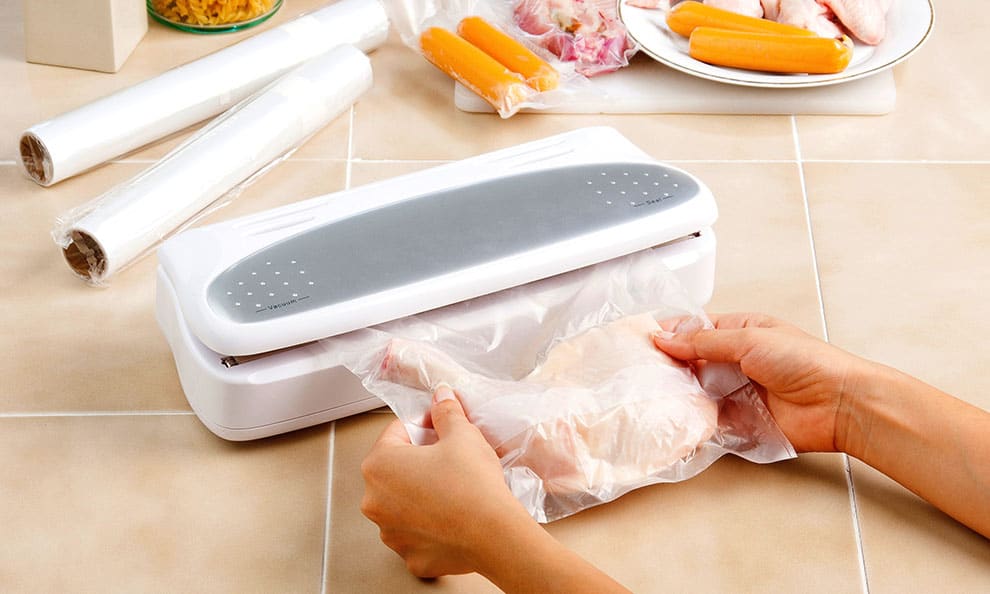
Preserving food is both an art and a science—there are a variety of different ways to go about doing it. While it requires some learning, if done properly, you’ll be able to store certain foods for months, if not years, past their regular shelf-life.
Here is a great article outlining the different ways you can preserve different foods, which includes freezing, cold cellaring, canning, dehydrating, fermenting, infusing, curing, and smoking.
45. Buy Meat From A Local Rancher
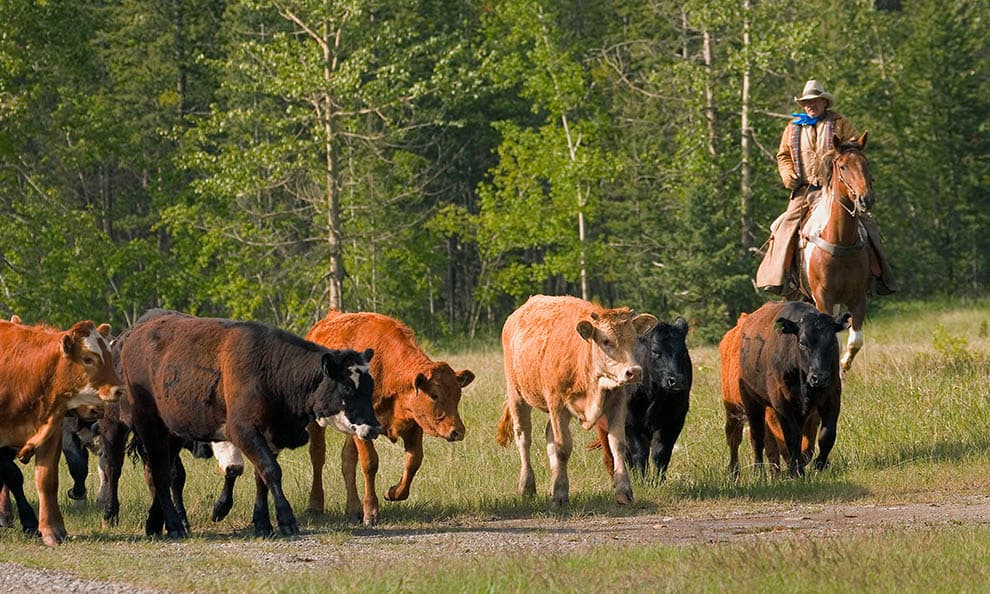
Grocery stores, at the end of the day, are really just the middleman between you and the farmers who grow the produce, fruits, and animals we eat. By cutting out the grocery stores and going directly to the source you can save big. One of the simplest ways to do this is buying meat directly from a local rancher.
I haven’t done this myself but I do have friends who’ve purchased whole and half pigs from ranchers. They say that it was one of the best decisions they made to save money on food.
There’s an upfront cost at first, but the quantity of meat is actually cheaper than if you were to buy the same amount at the store. My friends told me that they ran the numbers and calculated that the meat received was $2 cheaper per pound than the meat at the grocery store. When you consider half a pig is around 60 pounds, that’s a pretty big savings.
Check out your local rancher’s prices for how much a half, full, or third amount of an animal is (beef or pork). If it’s cheaper per pound than what you would get at the store, it might be worth the upfront cost.
EatWild.com is a great resource for finding farmers who sell directly to customers.
Bonus Tip: Don’t Be Afraid To Return Grocery Items
Occasionally I’ll get home after a grocery store run with a fresh load of food, only to be putting everything away and notice an item has either expired or been damaged. Chances are, this has happened to you at some point too.
Don’t simply throw the item away and hope it doesn’t happen again. Many grocery stores have great return policies. Trader Joe’s has a return policy that allows you to bring back any item that is unsatisfactory.
If you’re not satisfied with any of the groceries you just purchased, don’t let your money go to waste. Bring back the item and ask to speak with a manager about a refund. Explain the situation as politely as possible and you’re very likely to receive an exchange or get your money back.
Beware Of These Tricks Grocery Stores Use To Get You To Spend More
Arming yourself with the above tips and tricks to save money on your next grocery store run is sometimes not enough. Grocery stores, at the end of the day, are trying to get you to spend as much money as possible. Because of this, they often use tricks of their own to encourage you to buy more.
Here are some of those sales tricks to watch out for…
- The Entrance: Freshly baked goods and prepared foods are strategically placed at the front of the store so that you smell them upon entering, getting you hungry right before shopping in hopes that you’ll buy more.
- Essential Items Near The Back: Key foods almost everyone buys—milk, eggs, meat, fruit, and produce—are all pushed towards the back of the grocery store. This is done in an effort to force you to walk through the aisles to, hopefully, add extra items to your cart you may have not intended on purchasing beforehand.
- High Priced Items At Eyeline: Knowing that most people don’t want to bend over or reach up high, grocery stores place their most costly food items right where you can easily see and grab them. To find the less expensive (and often generic) versions, be sure to look up and down the shelves.
- Non-Essentials In The Checkout Line: Grocery stores like to tempt your self-control by placing candy, magazines, and other non-essential items right next to you in the checkout line. Don’t fall prey to these easy grab-and-go items.
- Coupling Products: Grocery stores know that certain products almost always go together. Think ketchup and mustard or chips and salsa. You’ll usually find some products shelved together in pairs in hopes that you’ll buy both, rather than just one.
- Layout Changes: Ever walk into a grocery store only to find everything has been moved to different locations? Layouts of the stores are occasionally changed in order to force you to walk around more to find what you’re looking for. By walking through more aisles, you’re more likely to see and grab an item you may not have originally planned on buying.
How Much Should You Actually Spend On Groceries?
Before you head off to the grocery store, prepped with all this new money-saving knowledge, it’s important to have a financial understanding of how much your budget should be in the first place.
Technically, how much you budget for groceries is based upon your specific needs. Some people are buying for a large household, others may have to buy for those who have specific food allergies, and so on. These details will affect the amount of money you’ll need to allocate towards food.
As a good starting point, you may want to use a calculator like this one to get a general sense of how much you should budget based on some key information (i.e. amount of people in your household, their ages, dietary needs). From there, you might find it helpful to look over the USDA food plans. These are specific food purchase plans based on different budget levels.
Final Thoughts
The common saying is, “nothing is certain except death and taxes.” Well, they should add to that: “and having to buy food”.
Just because we all need to eat, it doesn’t mean we all need to spend a fortune to do so.
The best way to save big on your next grocery store run isn’t necessarily by following one strategy outlined above or, on the flip side, following every single one of them. Rather, I hope you’re able to pick and choose the specific strategies that work best for your lifestyle. Stacking these money-saving tips together has the ability to help you save big the next time you’re at the grocery store.
Food Box HQ Tip: For those who are in more dire situations, do know that there are food assistance options out there for you. These include SNAP Food Benefits, WIC (Women, Infants, Children) Nutrition Program, Free School Meals for Children, Free Food Programs for Seniors, and nationwide food banks.




